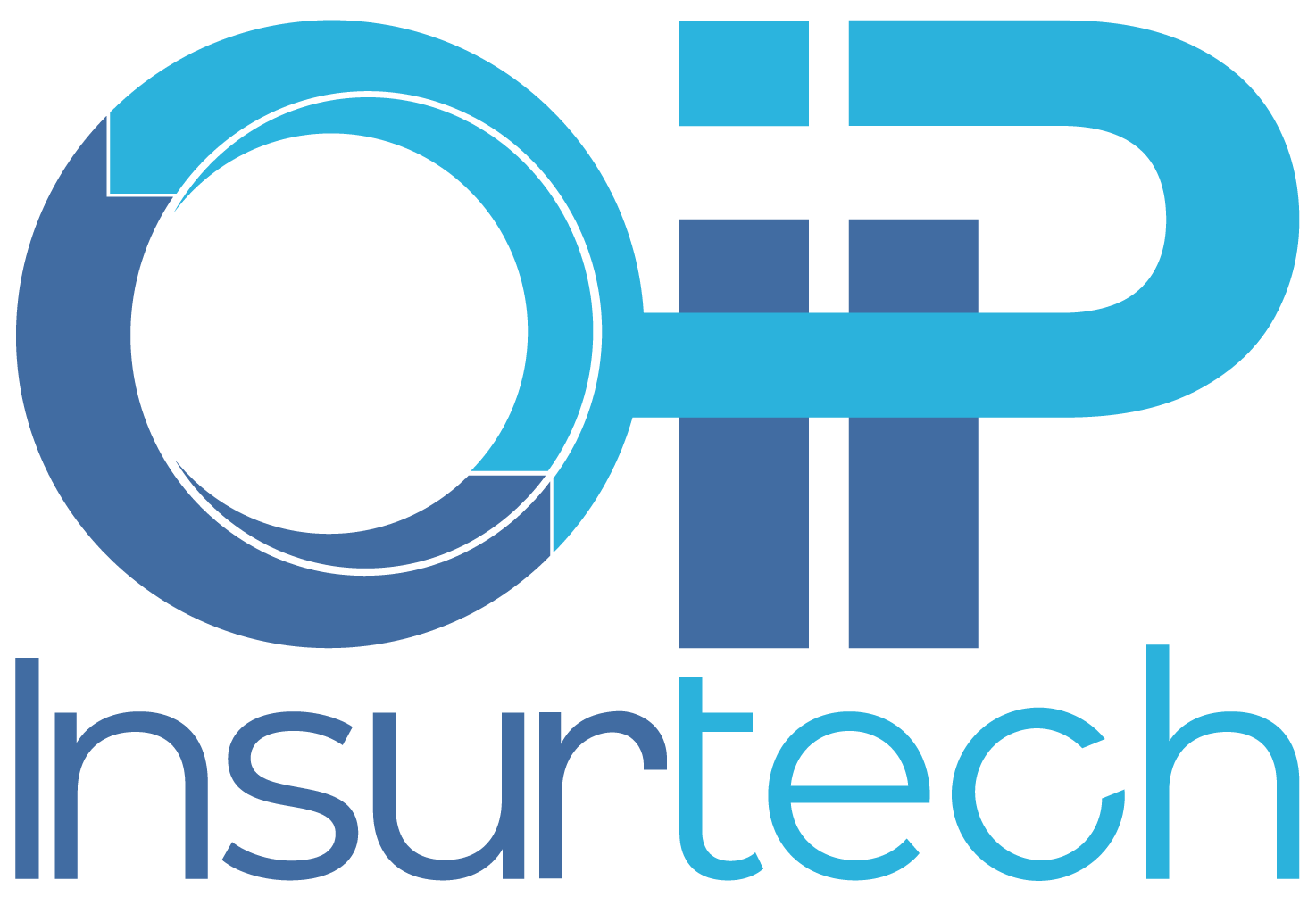The Intelligent Insurance Revolution: Exploring the Impact of AI in Claims Processing
Claims processing has always been a slow job. It takes time to read reports, check documents, and enter data by hand.
People make mistakes. Customers wait. Everyone gets frustrated.
This old way of working also costs a lot. It’s slow, messy, and full of small errors that cause big problems later.
AI is changing that.
Tools now help read forms, spot errors, and speed up decisions. They don’t get tired. They don’t forget to check a box. And they work fast – day or night.
That’s why carriers and MGAs are paying attention. They know faster claims mean happier clients, lower costs, and more time for the work that matters.
Let’s look at how AI is reshaping the claims world, starting with the problems it solves.
Understanding AI in Claims Processing
AI helps insurance teams work faster and smarter.
It doesn’t replace people; it helps them do less manual work and make better decisions.
In claims, AI looks at large amounts of data. It finds patterns, reads documents, and flags anything that looks wrong or unusual. That way, claim adjusters don’t need to go through everything themselves.
AI in claims usually means tools like:
- Computer vision that reads scanned forms and photos
- Natural language processing (NLP) that understands text in emails or letters
- Machine learning that learns from past claims and improves over time
These tools speed up the process. They help teams handle more claims without hiring more people. They also help spot fraud or missing details.
For example, instead of waiting for someone to review a claim, an AI system can read it and say, “This looks like a standard auto claim. It’s complete. Move it forward.”
That saves hours, sometimes days.
Some systems even handle customer chats or guide policyholders through the first steps after an accident. Others can pull info from police reports or doctor’s notes.
That all means fewer delays, better accuracy, and faster payments.

Key Use Cases: How AI is Revolutionizing Claims
1. Faster First Notice of Loss (FNOL) and Triage
One of the hardest parts of claims is just getting started. When a customer calls or submits a claim, someone has to collect all the info. That takes time.
Now, AI can handle the first step.
Chatbots and voice assistants can guide the customer through the claim. They ask simple questions like:
- What happened?
- When did it happen?
- Is anyone hurt?
They collect everything and send it into the system right away. No waiting. No back-and-forth emails.
Once the claim is in, AI can triage it.
It means sorting it based on how complex or serious it is.
Simple windshield crack? Goes straight to fast-track. Big house fire? Sent to a senior adjuster.
The result is faster responses for the customer and less stress on your team.
2. Instant Damage Assessments via Computer Vision
AI can now look at photos or videos and understand what’s damaged.
It is called computer vision and is used in auto and property claims.
A driver can take a few photos of a dented bumper. AI scans the images, compares them to past claims, and gives a repair estimate. All within seconds.
No need to wait for someone to review photos or visit the scene.
Big insurers are already using it.
The Hartford has added photo-based damage review to speed up claims. Allianz has used computer vision to offer 60-second auto claims in some markets.
It means customers make decisions faster. And adjusters don’t spend hours reviewing photos.
3. Advanced Fraud Detection and Prevention
AI can spot fraud that people often miss.
It looks at thousands of claims at once and finds patterns that seem odd. For example, it might catch someone filing the same type of claim every year or notice that a repair shop is always involved in suspicious claims.
It helps insurers stop fraud early. It also saves money and keeps things fair for honest customers.
One example is Shift Technology. Their system uses AI to scan claims and flag the risky ones. Some insurers have reduced fraud by up to 75% using tools like this.
With AI, fraud gets harder. And trust gets stronger.
4. Intelligent Claims Routing & Workflow Automation
AI helps move claims faster.
It looks at each claim and decides where it should go. Simple ones go to fast-track teams. Complex ones go to senior adjusters. Urgent ones are flagged right away.
Besides saving time AI gets the right people working on the right tasks.
It also predicts what might happen next. It can spot delays before they happen. Or remind a team to follow up. That means fewer backlogs and better service.
It’s like having a smart traffic system for your claims. Everything flows better.
5. Straight-Through Processing & Rapid Settlement
AI can now handle simple claims from start to finish.
When the claim is clear and meets certain rules, there’s no need for human review. The system checks the data, confirms coverage, and approves payment in minutes.
Metromile, a pay-per-mile auto insurer, has used this to settle some claims instantly. A driver uploads photos, AI checks the damage, and the claim is paid out – all in the same day.
It provides policyholders with a smooth, fast experience, while also reducing costs and freeing up staff for more complex cases.
6. Enhanced Subrogation Opportunities
AI can spot subrogation chances that humans often miss.
It reviews claim data, police reports, photos, and other documents to find cases where another party is at fault. Then, it flags those claims for recovery.
Insurers get back money they would have otherwise lost, while also improving claim accuracy and reducing financial leakage over time.
7. AI-driven Document Processing
AI reads documents just like a human would but faster.
Using OCR and NLP, it pulls data from forms, emails, PDFs, and even handwritten notes. Then it sends that data directly into the claims system.
MGAs and carriers no longer waste time typing things in by hand, cutting down on errors and speeding up the entire claims process.
8. Improved Customer Communication & Experience
AI tools now talk to customers faster and better.
Chatbots and voice assistants help answer questions and file claims anytime. Generative AI can even write custom updates, making the experience feel more personal.
People get real-time info on their claim status. They don’t need to wait or keep calling. That means less frustration and more trust in the process.
Major Benefits of Implementing AI in Claims
1. Significant cost savings and better efficiency
AI reduces the need for manual work. It speeds up how fast a claim gets reviewed, assigned, and resolved. Less paperwork means fewer hours spent on data entry or back-and-forth emails.Insurers save money by needing fewer people to do the same tasks. It also reduces delays, which keeps customers happy and lowers operating costs.
2. Better accuracy and consistency
AI follows the same rules every time. It doesn’t get tired or make mistakes from copying the wrong number.
That means claims are handled in a fair, clear, and repeatable way. Underwriters and adjusters don’t have to recheck everything because the system does it right the first time.
3. Smarter fraud prevention
AI can catch things people miss. It checks patterns and flags claims that don’t look right, helping insurers stop fraud before it happens.
Fewer false claims means less money wasted and more trust from honest policyholders.
4. Happier customers and employees
Customers get updates fast. Some claims can be approved in minutes. That makes people feel taken care of.
On the other side, your team no longer has to spend hours typing the same info into three different places. They focus on important work, not busywork.
5. Scalability and long-term advantage
AI helps you handle more claims without hiring more people. During storms or disasters, when volumes spike, the system keeps up.
It also makes your business stand out. Fast, accurate claims give you an edge over slower competitors.
Real-World Examples and Success Stories
AI in claims isn’t just theory. It’s already transforming operations at leading insurance companies. Here are a few real-world examples of how it’s making a difference:
Allianz Direct: 60-second auto claims
Allianz Direct introduced an AI-powered claims process that can settle auto claims in as little as 60 seconds. When a customer reports damage, they upload photos using their phone. AI reviews the images, checks them against policy details, and calculates the repair cost.
If everything checks out, the system instantly approves the payout, which has made claims faster, smoother, and much less stressful for policyholders. It’s a big leap from traditional claims that can take days or even weeks.
The Hartford: AI-powered photo-based appraisals
The Hartford uses computer vision to speed up how car damage is reviewed. Customers take pictures of the damage and upload them through an app. AI scans the photos, identifies the damaged parts, and gives an estimate.
Instead of waiting for an adjuster to come out and inspect the vehicle, claims can move forward right away. It has helped The Hartford reduce turnaround time and improve customer satisfaction, especially after big weather events.
Metromile: Instant claim settlements using telematics & AI
Metromile, a U.S.-based pay-per-mile auto insurer, uses telematics and AI to settle claims almost instantly. When a crash happens, their system collects driving data in real time. The driver then uploads pictures of the damage.
AI compares the images and driving data, confirms the claim, and processes the payment. Some claims are fully resolved the same day, without any human handling. This shows how far AI can go when paired with usage-based data.
Zurich Insurance: Leveraging ChatGPT for document summaries
Zurich is using a version of ChatGPT to help its teams process complex insurance documents faster. Long legal or medical reports are summarized using generative AI, allowing underwriters and claims handlers to spot important details without reading every word.
They have cut down hours of reading, made the claims process more efficient, and reduced errors caused by missing key information buried deep in a report.
Gallagher Bassett: AI-enhanced administrative efficiency
Gallagher Bassett, a major third-party administrator (TPA), has applied AI to improve back-office tasks like case notes, claims triage, and workflow management. By using machine learning, they can assign cases to the right adjuster faster, auto-generate updates, and flag anything unusual.
It’s helped them boost productivity and handle large volumes with fewer delays, especially during surge events like natural disasters.

Challenges and How to Overcome Them
AI can do a lot. But using it right takes work. Many insurers face real challenges when trying to bring AI into claims. Let’s look at each one and how to solve it.
Data Quality and Management
AI only works well if it gets the right data.
Many insurers have data that’s old, messy, or stored in different formats. That makes it hard for AI tools to understand what’s going on.
How to fix it:
- Clean the data first. Remove duplicates, errors, and outdated records.
- Use structured formats like JSON or standardized XML for documents.
- Add data validation rules to make sure new data is always clean and consistent.
Good data is like fuel. Without it, the AI engine won’t run well.
Legacy System Integration
A lot of insurers still use older systems. These don’t always play well with new tech.
That creates problems when AI needs to push or pull data quickly.
How to fix it:
- Use APIs and middleware that let old and new systems talk.
- Create a phased plan: start with non-critical processes before linking core systems.
- Choose AI tools that are flexible and can adapt to different system setups.
- Don’t rip and replace. Instead, connect what you already have.
Workforce Resistance and Change Management
Some people worry that AI might replace them.Others just don’t want to change how they work.
How to fix it:
- Be clear: AI is here to help, not take over.
- Show how it removes boring tasks and lets them focus on more valuable work.
- Offer training early and often. Let people test the tools and ask questions.Share success stories from other teams.
People support what they help build.
Model Accuracy and Human Oversight
AI isn’t perfect. It can miss things or get confused.
In claims, even small mistakes matter.
How to fix it:
- Add checkpoints where humans review what the AI suggests.
- Use confidence scores. When AI is unsure, it asks a person to check.
- Keep feedback loops. If AI makes a mistake, let it learn from it.
The best systems mix speed from AI with wisdom from people.
Regulatory, Compliance, and Ethical Concerns
Insurers must follow rules. And they must treat people fairly.
That’s not always easy when AI is making decisions behind the scenes.
How to fix it:
- Document how AI makes decisions. Keep audit trails.
- Use explainable AI (XAI) to show why something was approved or denied.
- Regularly test the models to check for bias or unfair results.
- Work with legal teams to stay updated on changing laws.
Regulators want transparency. So do customers.
Consumer Trust and Communication
If policyholders don’t trust the process, they’ll leave.
People may not like the idea of a “robot” handling their claims.
How to fix it:
- Be honest. Tell them AI is used to speed things up and reduce mistakes.
- Give clear updates during the claims process.
- Offer easy ways to speak to a human anytime.
- Use simple language in messages and emails.
Trust is built through clear, kind, and fast communication.
Future Trends & Outlook
AI in claims is just getting started. What we’ve seen so far is only the beginning. Let’s explore what’s next.
Generative AI Will Play a Bigger Role
Generative AI is already making waves.
Tools like GPT can read long documents, summarize claims, or even draft messages to policyholders. Many insurers are testing these tools to reduce the time spent on paperwork and emails.
Soon, claims adjusters may have their own AI assistants. These bots could help explain policy language, prepare customer replies, or suggest next steps.
Some carriers are training custom GPT-style models on internal data, giving their teams fast answers without digging through manuals or shared drives.
We’ll see more of this. Generative AI will become a trusted sidekick for claims teams.
From Small Tests to Big Rollouts
Many carriers and MGAs started with pilot projects. They tested AI in just one line of business or one part of the claims process.
Now, they’re going bigger.
The new trend is full-scale adoption. Companies want AI across the entire claims lifecycle, from FNOL to settlement and even subrogation.
Such shift is driven by proven results. Once leaders see better speed, lower costs, and happier customers, they want the same impact in other areas too.
AI will move from “innovation labs” to the core of claims operations.
More Rules Are Coming
Regulators are starting to pay closer attention to AI.
There’s growing pressure to make sure algorithms are fair, explainable, and secure. In the U.S., states like California and Colorado are already reviewing how insurers use AI.
In the future, there may be rules that require clear audit trails for AI decisions, regular bias testing of models, and transparency in claims denials or approvals.
Insurers who get ahead of this, by building ethical, well-documented AI systems, will be in a better position long-term.
AI won’t work if customers or regulators don’t trust it.
What Will Claims Look Like in 10 Years?
The claims experience will be faster, smarter, and far more automated.
Here’s what we’re likely to see:
- Claims filed and processed in minutes, not days
- AI assistants helping both customers and employees in real time
- Near-complete automation for low-complexity claims
- AI flagging subrogation and fraud opportunities automatically
- Seamless data flow between systems with minimal human input
Human experts will still be key. But they’ll focus on high-value tasks—complex reviews, customer care, and tough decisions.
In short: AI won’t replace adjusters. It will make them faster, sharper, and more effective.
The next decade will belong to insurers who adopt AI wisely. And early.

How OIP Insurtech Helps You Harness AI in Claims Processing
At OIP Insurtech, we know insurance inside and out. Our team isn’t made up of generic tech consultants. It’s made of insurance professionals who’ve worked in underwriting, claims, operations, and policy servicing. We understand the grind – manual data entry, repetitive tasks, and hours lost chasing missing information.
That’s why we built solutions that actually solve the problems insurers face every day.
Meet NT Extractor: AI That Understands Insurance
NT Extractor is OIP’s AI-powered platform built for insurance document processing. It’s not just another OCR tool. It’s a full-scale automation engine that reads, understands, and routes insurance documents, no matter how complex they are.
Many features sets our software apart…
From First Notice of Loss (FNOL) to final settlement, NT Extractor captures and classifies data in seconds. Claims teams don’t waste time opening PDFs or typing into multiple systems.
Built with proprietary AI models and trained on real insurance documents, NT Extractor hits up to 99% accuracy, even on handwritten, scanned, or low-quality forms.
Whether you work with a modern claims system or a legacy platform, NT Extractor connects through APIs or RPA. It blends into your current workflow without causing disruption.
NT Extractor runs in a private cloud or on your own servers. It never sends data off to unknown third parties. It’s fully aligned with ISO 27001 and SOC 2 standards, so your data stays safe and your audits stay clean.
AI doesn’t run wild. Your team, or our trained experts, can step in anytime for quality control, edge cases, or model feedback.
Results That Matter, Fast
Our clients don’t wait months to see results. With OIP Insurtech and NT Extractor, insurers can start improving claims processes in a matter of weeks. Here’s what they gain:
- Claims get processed in a fraction of the time, making customers happier and boosting retention.
- Teams save thousands of hours by eliminating repetitive manual work.
- With clean, structured data flowing into your system, your analytics, fraud checks, and risk reviews become more accurate.
- Automated data capture means fewer typos, fewer missing fields, and fewer headaches.
Ready to Transform Claims?
Insurers today don’t just want innovation, they want real outcomes.
That’s what we deliver.
With OIP Insurtech and NT Extractor, you get a partner who knows the industry, understands your pain points, and brings the right AI to solve them. Whether you’re an MGU, carrier, or TPA, we help you automate smarter, scale faster, and serve better.
Let’s build the future of claims – together.
The Bottom Line
AI is no longer a future trend in claims processing—it’s the new standard. It helps insurers cut costs, reduce errors, speed up claims, and deliver a better experience for customers. From faster FNOL handling to smarter fraud detection and instant document processing, the value is real and measurable.
For carriers, MGAs, and TPAs, the message is clear: adopting AI isn’t optional anymore. It’s how you stay competitive. It’s how you grow.
At OIP Insurtech, we combine deep insurance expertise with purpose-built AI like NT Extractor to help you get ahead—without the usual tech headaches. If you’re ready to work faster, smarter, and with fewer errors, we’re ready to help you get there.
Now’s the time to future-proof your claims operations. Let’s talk.

